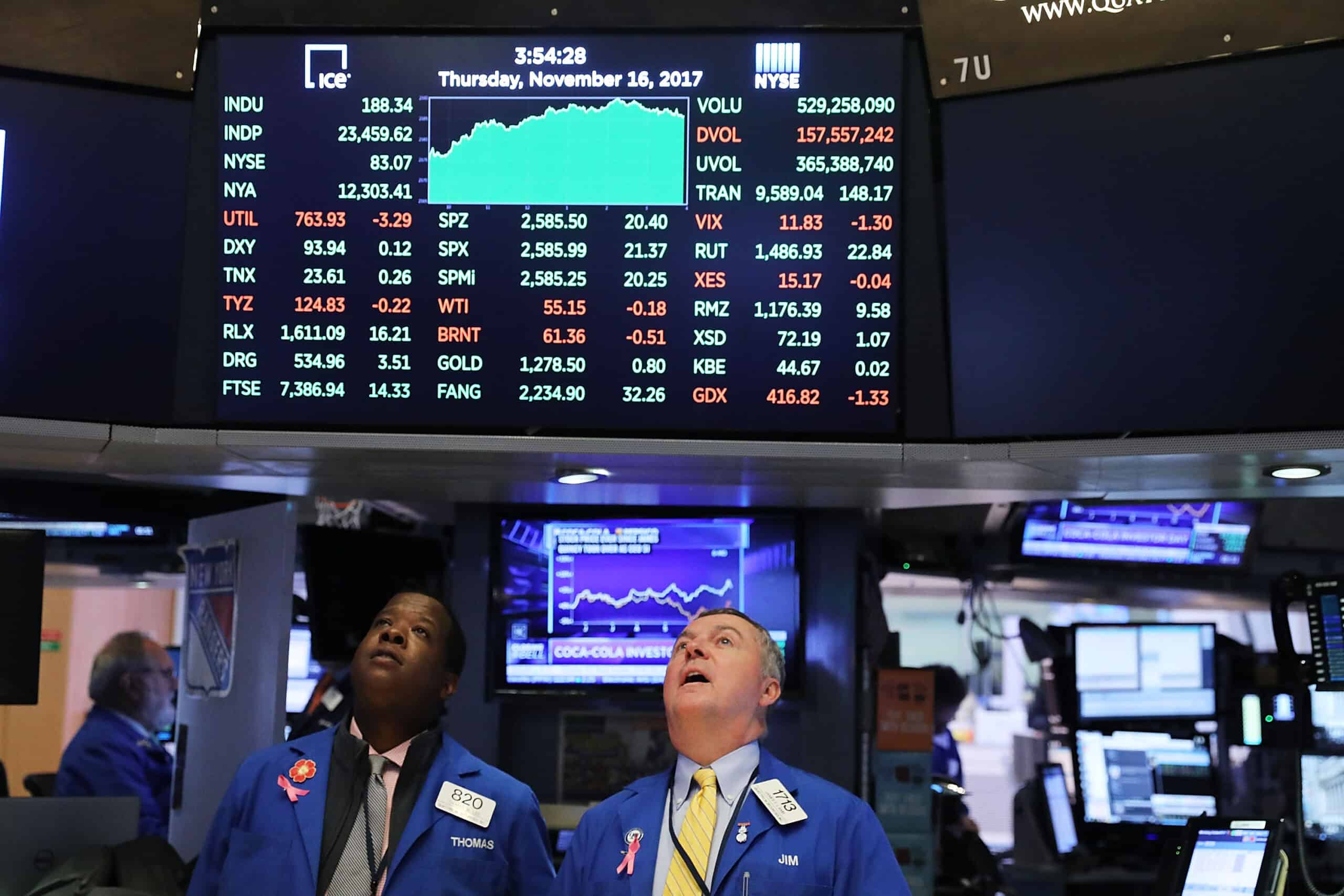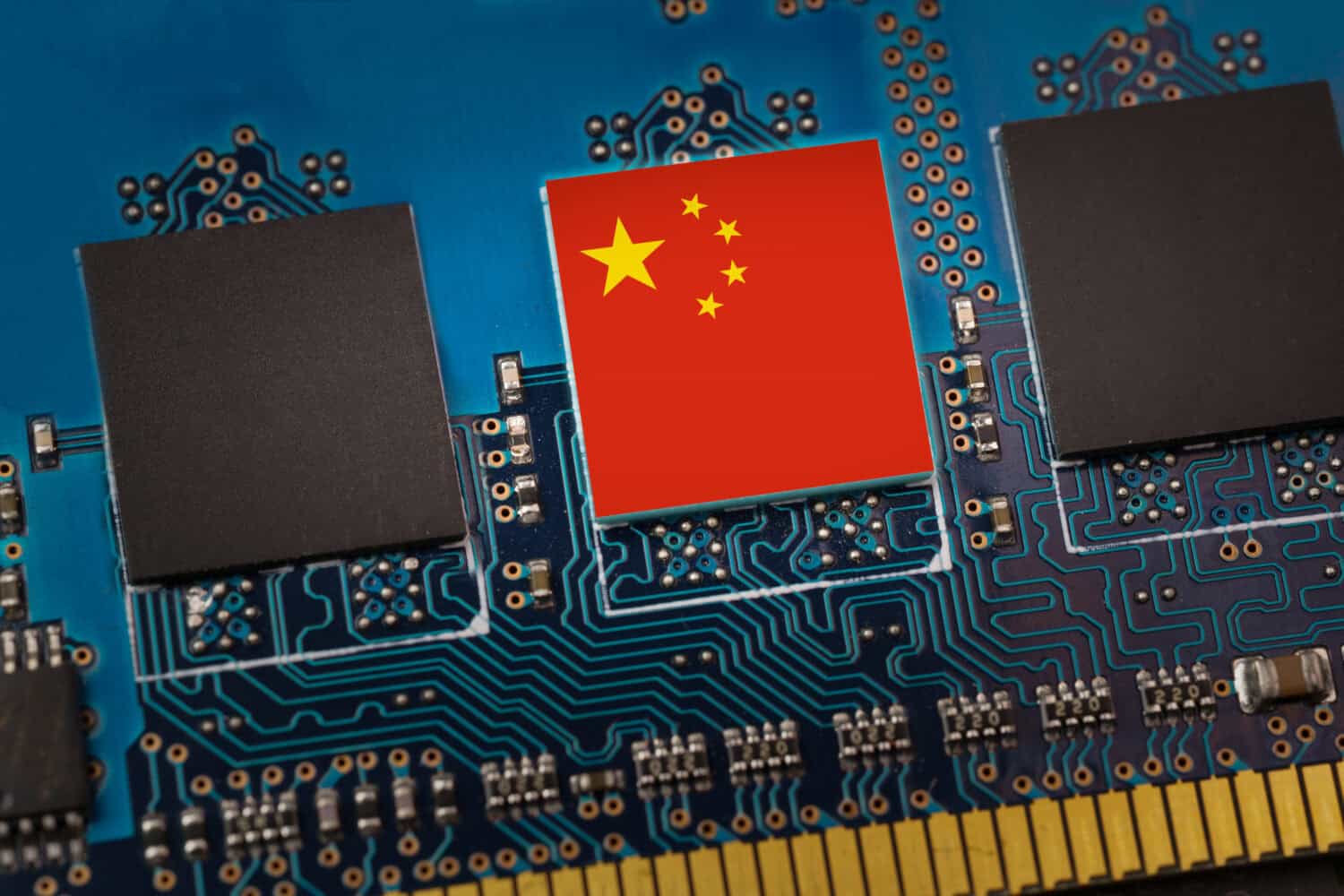
24/7 Wall Street Insights
- NASDAQ was founded in 1971 as an automated quote stock exchange alternative to the New York Stock Exchange, and now has more listings than the NYSE.
- China’s announcement of an $850 billion sovereign bond sale will likely keep it on the sidelines for future US Treasury auctions, resulting in depressed pricing and reduced US dollar buying power.
- With dividend stocks one of the few passive income options that has widespread access and appeal to both small and large investors, NASDAQ dividend stocks are worth consideration as potential portfolio additions.
The First Electronic Stock Exchange

Launched in 1971, the NASDAQ (National Association of Securities Dealers Automated Quotations) market was the first electronic stock market. In roughly 20 years, its share of the overall US stock market had grown to 46%. As an alternative to the more expensive NY Stock Exchange, the NASDAQ exchange attained credibility and parity with the NYSE, thanks to the success of tech companies like Apple, Microsoft, and Intel, among others. As of the start of 2024, NASDAQ contained 2.500 listed stocks, vs. 2,272 stocks for the NYSE.
NASDAQ Dividend Stocks

A majority of NASDAQ stocks are high growth oriented, being in sectors like technology, media, biotech, or comparable industries. Reinvestment of profits to fuel more growth has been the norm for decades. Nevertheless, there are a few hundred dividend paying NASDAQ stocks in existence. Some of the yields listed below are based on market price at the time of this writing, and the highest yielding ones are likely unsustainable or temporary, due to a market selloff that will correct in the near future.
The List of 15
The following list contains some of NASDAQ’s highest dividend yields. REIT = Real Estate Investment Trust. BDC – Business Development Company
| Name | SYMB | Yield | Sector |
| Creative Media & Community Trust Corp. | CMCT | 56.71% | REIT |
| Icahn Enterprises LP | IEP | 27.03% | Conglomerate |
| New York Mortgage Trust | NYMT | 14.47% | REIT |
| Oxford Square Capital Corp. | OXSQ | 14.33% | BDC |
| Berry Corp. | BRY | 14.18% | Oil & Gas |
| Prospect Capital Corporation | PSEC | 14.09% | BDC |
| National Health Trends Corp | NHTC | 14.06% | e-commerce |
| AGNC Investment Corp. | AGNC | 13.89% | REIT |
| Horizon Technology Finance | HRZN | 12.60% | BDC |
| B. Riley Financial | RILY | 11.80% | Financial |
| Uniti Group | UNIT | 11.15% | REIT |
| Walgreens Boots Alliance | WBA | 11.11% | Healthcare Retail |
| Xerox Holding Corp. | XRX | 9.84% | Digital & Print svc. |
| Big 5 Sporting Goods Corp. | BGFV | 9.71% | Retail |
| TFS Financial Corp | TFSL | 8.69% | Banking |
Why Dividend Stocks?

As a source of passive income, dividend stocks have a number of attractive features:
- Low admission cost (unlike investments in real estate or other businesses)
- Wide Diversification of Industry (managing risk with a portfolio mix of various sector stocks)
- Market Liquidity Ease (T+1 is now standard)
- Risk Tolerance ranges (conservative investors and high rolling gamblers can both find stocks they like)
- Ease of Replaceability (if one stock receives adverse news, it can easily be replaced by another stock with a comparable yield)
Passive Income Needs – Weaker US dollars

China recently announced it was selling 6 trillion yuan in government bonds (about US$850 million) to serve as its own quantitative easing and for government coffers. While there are potential political consequences from China dumping a chunk of its huge US Treasury portfolio on the global markets, it is unlikely they will be a big buyer in the future, as they would be a de facto rival seller.
Future US Treasury bond auctions, lacking the buying clout of China, will likely face a discount, and the diminished buying power value of the US dollar will fall commensurately, elevating inflation. With many US household budgets already stretched to the breaking point, these families will be hard pressed to find other income streams, passive or via extra employment, to make ends meet.
For those families with investable assets, they may find that dividend stocks are among the best options available.
It’s Your Money, Your Future—Own It (sponsor)
Retirement can be daunting, but it doesn’t need to be.
Imagine having an expert in your corner to help you with your financial goals. Someone to help you determine if you’re ahead, behind, or right on track. With SmartAsset, that’s not just a dream—it’s reality. This free tool connects you with pre-screened financial advisors who work in your best interests. It’s quick, it’s easy, so take the leap today and start planning smarter!
Don’t waste another minute; get started right here and help your retirement dreams become a retirement reality.
Thank you for reading! Have some feedback for us?
Contact the 24/7 Wall St. editorial team.





